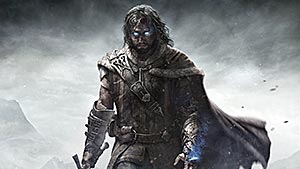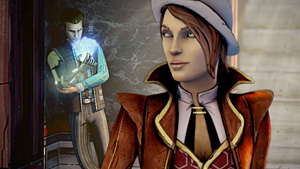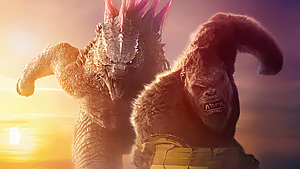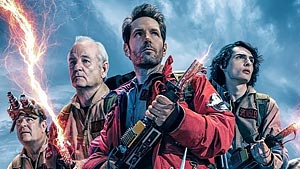November 20, 2014 by Paul Curtin

No, it’s not another Assassin’s Creed or Batman: Arkham game… it’s WB and Monolith’s new IP, Middle-earth: Shadow of Mordor, that features all of these familiar gameplay elements, yet still manages to feel unique enough to be the sleeper hit of the year that everyone should play.
Taking place between the events of The Hobbit and The Lord of the Rings trilogies, Shadow of Mordor impressively takes J.R.R. Tolkien’s source material and expands upon it to create an enjoyable new tale. Hardcore fans of the author’s lore might find fault with Mordor’s story of revenge that goes against Tolkien’s style, but it’s by going in this different direction that we’re able to get an interesting new tale that feels fresh after so many other recent Lord of the Rings games.

The story opens in dramatic fashion as the evil Sauron’s Uruk (orc) forces invade a garrison stationed at the Black Gate of Mordor. Talion, voiced by the industry’s current top actor, Troy Baker, is a ranger captain stationed at this garrison and after being captured is forced to watch his wife and son brutally sacrificed by Uruk captains before being killed himself. This sacrifice doesn’t go according to plan and rather than summoning the wraith of Elf Lord Celebrimbor as they intended, it results in his merging with Talion that brings the ranger back from the grave. The two, now together as one, set out to avenge the death of their loved ones by taking down Sauron’s army.
After this intriguing introduction, the game opens up to allow Talion to travel freely through the vast barren land of Mordor. As with any great open world game, Mordor is filled with places to go, people to meet, and missions to complete. Characters both new and old show up. Those such as Gollum are portrayed just as well as they are on film, and hilarious additions like Ratbag add some comic relief to the serious subject manner. But what makes exploration through these desolated areas so enjoyable is how fast and simple it all is.
The development team at Monolith have simplified almost every third-person assassin gameplay mechanic to make it more fluid. There are almost no requirements for jumping over objects or climbing up walls and buildings. If there’s an object in his way, Talion will instantly vault over it while running, and if timed correctly can get a speed boost multiplier. If there’s a wall, simply holding the climb button down will automatically force Talion to find a way to scale it without the player having to find specific spots to grab on to.

The same ability to jump up to any ledge or platform is also available with mounts that Talion can tame and ride to traverse the land even faster than on foot. Like Assassin’s Creed’s leap of faith into hay, even falling from hundreds of feet results in no damage to Talion and here in Mordor can be performed anywhere. There’s no logic to it; everything just works the majority of the time, and as a result it is simply pure fun.
But it’s not all fun and games at the beginning as Talion’s journey can start out rough for the player. Again, similar to Assassin’s Creed and the Arkham series, combat involves the player jumping quickly from enemy to enemy and attacking them in a fluid combat system that rewards players for uninterrupted combos. To tip the odds in the Uruk’s favor early on, there aren’t many combos available to the player at first, and Talion’s ranged bow attack that slows down time has a very limited amount arrows. Like his ranged attack, Talion’s health can also run out quickly and doesn’t automatically regenerate, requiring players to either run away from a fight to restock and recover or risk a crushing defeat.
It’s easy to get overwhelmed by large groups of enemies with shields and archers who call in reinforcements, so players must strategically figure out whom to attack first. While frustrating at first, it’s in this process of getting picked on by enemies during the early stages of the game that makes Talion’s tale of revenge even stronger and makes combat progression even more rewarding.

As with everything else in Mordor, the learning curve for combat has been lowered and been made more responsive and easier to use for the player. No matter how far into a slashing animation or other movement Talion is already in, the player is never locked into a single animation. This works great when, say, executing an enemy only to realize that you should have countered another enemy to ensure that Talion is prevented from being hit, which results in losing his combo streak.
Finishing maneuvers are easily generated and slicing off the head of an Uruk captain with a goofy name like “Dush” in slow-motion as his bodyguards retreat crying out “He’s choppin’ off heads!” is hilarious, shocking, and empowering all at the same time. It never gets old terrorizing these monsters and getting sweet, sweet revenge on them after getting beat up on early in the game.
While the fluid combat mixed with the advanced upgrade system is what gives the player the feeling of power in Mordor, it’s Monolith’s revolutionary new Nemesis system that brilliantly brings everything together. Talion’s primary mission of revenge involves taking down the warlords of Sauron’s army one-by-one, so at any time the player can freely chose who to go after next and mark their target when viewing a detailed hierarchy of warchiefs, captains, and other followers.

Before attempting to take out an Uruk, players are encouraged to find intel scattered throughout Mordor or integrate other Uruks into giving up information on their leader. This system allows Talion to discover a full list of each military member’s strengths and weaknesses and gives each top-level enemy more character. The mechanics used here by Monolith are some of the best uses of procedurally generated content of any game ever and make going back to other RPGs feel dated.
Each Uruk is unique in its own way and results in a different experience every time you encounter one. Should you sneak into an enemy stronghold to try and stealth kill a commander from behind? Or exploit a warchief’s fears by riding a mounted Caragor (giant wolf-like beast) into battle? How about dropping a bees’ nest on the commander and crew’s heads and then going in for the execution amidst all the havoc? The choice is always up to you… but you have to be careful, because the same tactics won’t always work.
Caragors or bees might not be an Uruk warchief’s weakness… sometimes, the same tactics you used to scare one leader will only infuriate another into an even more difficult state to kill. It’s because of this that proper intelligence must be collected on each boss before the encounter. Or, for a true challenge, you can always just run straight into battle and try to improvise on the fly. Again, the choice is yours.

Taking out bosses based on their strengths and weaknesses isn’t anything new. We’ve seen it all before. But the Nemesis system takes this procedurally generated system one step further. Upon finding an Uruk leader — or one just showing up out of nowhere to attack you – the drums of war will start beating and the warchief’s name will be chanted by their followers as they make their epic slow-motion WWE/UFC gladiator entrance. Once getting close enough, Talion’s sword will clash with the Uruk’s as the camera zooms in, and the Uruk introduces himself by delivering a quick line or two that’s sometimes directly related to what Talion has recently done.
Because Talion respawns using the typical video game format, Uruks who have killed you before will remember this and even make comments questioning how you’ve cheated death and how they’re going to make sure you stay dead this time. Each of these Nemesis encounters gives a personal touch to the typical assassination mission format that feels unlike what any other game has been able to accomplish before. This back and forth struggle creates feuds with side-quest characters who really have nothing to do with the story, yet become more memorable than some of the weaker final boss fights.
There’s even a unique promotion system where the enemy who lands the killing blow on you will get promoted, gaining a new title and more bad-ass armor. Once one Uruk is promoted, another Uruk comes in to fill his empty slot, and another comes in to fill an empty spot you created by previously killing another. This can be infuriating in a good way. Seeing the tide of war shift back into Sauron’s favor and all the hard work you put in clearing out his army instantly begin to revert back after every one of your deaths is soul-crushing. It’s one of the most innovative ways to punish death in a video game without physically taking something from the player, and quite frankly, it’s brilliant.
This promotion system can also be used in Talion’s favor as later in the game he gains the ability to brand and take over the feeble minds of Uruks so that he can plant his own commanders in Sauron’s army. This adds even more variation to enemy encounters as Talion can create power struggles between the Uruks and choose to help one side or the other to his own advantage or just sit back and watch the drama unfold.
The Verdict
Monolith’s simplified combination of all things good from similar games has produced one of the surprisingly best games of the year. Whether a fan of J.R.R. Tolkien’s Lord of the Rings source material or not, the exciting fast-paced gameplay mixed with the revolutionary Nemesis system alone makes Shadow of Mordor far more interesting and enjoyable to play from start to finish than any other recent game in the same genre. Middle-earth: Shadow of Mordor gets 4.5 out of 5 stars (Amazing).
The Pros
- Revolutionary Nemesis system
- Exciting combat progression
- Fluid gameplay and controls
- Solid story and characters
- Great sights and sounds
The Cons
- Anti-climactic final boss fights
- Occasional control issues














